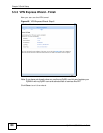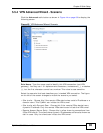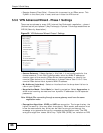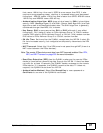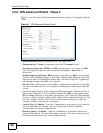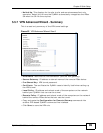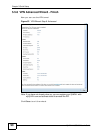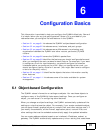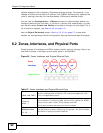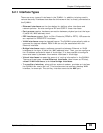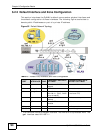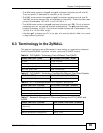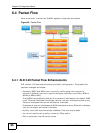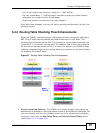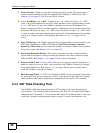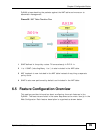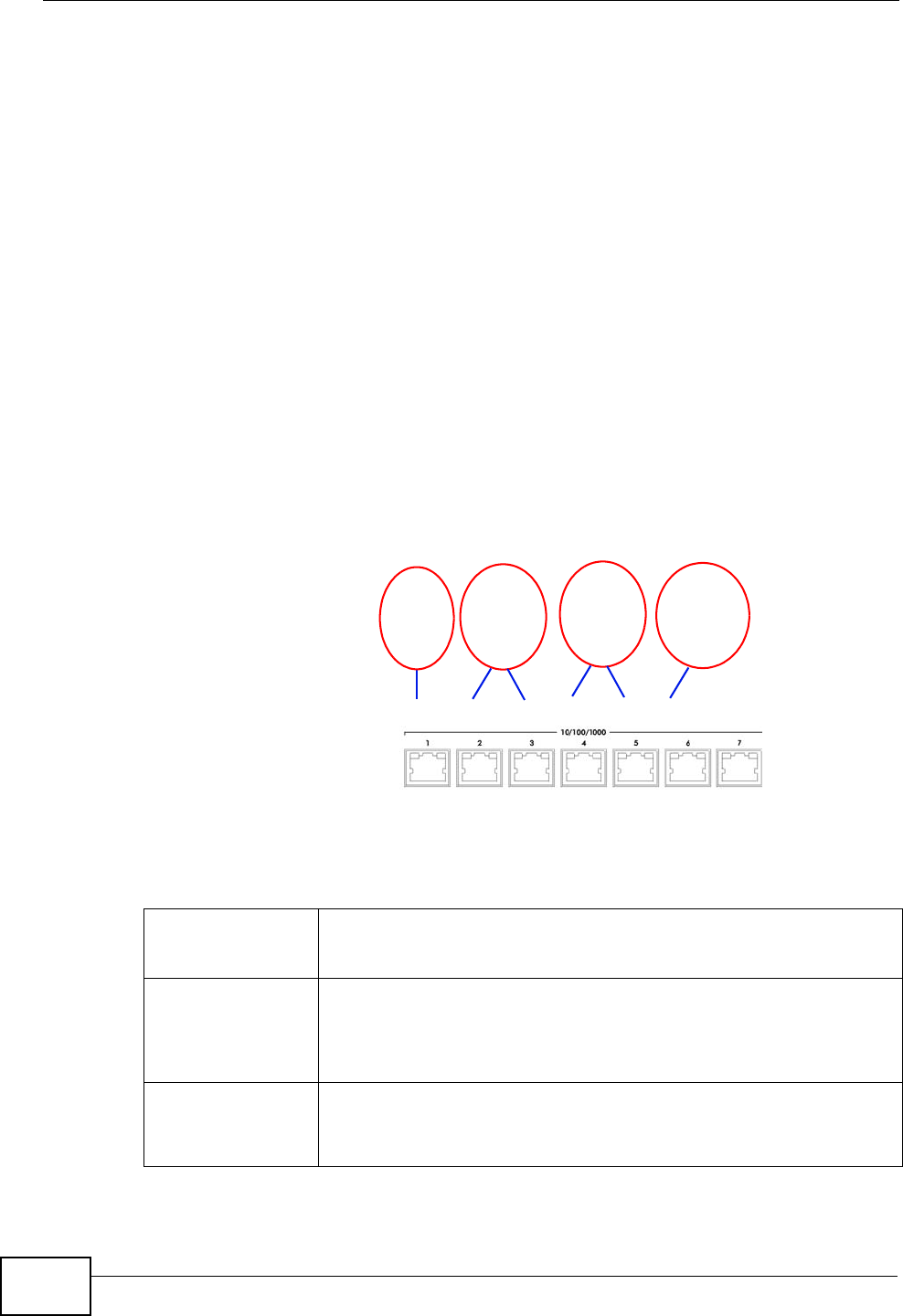
Chapter 6 Configuration Basics
ZyWALL USG 300 User’s Guide
92
objects whenever the interface’s IP address settings change. For example, if you
change an Ethernet interface’s IP address, the ZyWALL automatically updates the
rules or settings that use the interface-based, LAN subnet address object.
You can use the Configuration > Objects screens to create objects before you
configure features that use them. If you are in a screen that uses objects, you can
also usually select Create new Object to be able to configure a new object. For a
list of common objects, see Section 6.6 on page 110.
Use the Object Reference screen (Section 3.3.3.3 on page 57) to see what
objects are configured and which configuration settings reference specific objects.
6.2 Zones, Interfaces, and Physical Ports
Zones (groups of interfaces and VPN tunnels) simplify security settings. Here is an
overview of zones, interfaces, and physical ports in the ZyWALL.
Figure 54 Zones, Interfaces, and Physical Ethernet Ports
Table 12 Zones, Interfaces, and Physical Ethernet Ports
Zones
(WAN, LAN, DMZ)
A zone is a group of interfaces and VPN tunnels. Use zones to apply
security settings such as firewall, IDP, remote management, anti-
virus, and application patrol.
Interfaces
(Ethernet,
VLAN,...)
Interfaces are logical entities that (layer-3) packets pass through.
Use interfaces in configuring VPN, zones, trunks, device HA, DDNS,
policy routes, static routes, HTTP redirect, and NAT.
Port groups combine physical ports into interfaces.
Physical
Ethernet Ports
(P1, P2, ...)
The physical port is where you connect a cable. In configuration, you
use physical ports when configuring port groups. You use interfaces
and zones in configuring other features.
Physical Ports
Interfaces
Zones
LAN
P1 P2 P3 P4 P5 P6
ge1 ge2 ge3
ge6
WAN
WLAN
ge4 ge5
DMZ



